Related Research Articles
Pig Latin is a language game or argot in which English words are altered, usually by adding a fabricated suffix or by moving the onset or initial consonant or consonant cluster of a word to the end of the word and adding a vocalic syllable to create such a suffix. For example, "Wikipedia" would become "Ikipediaway". The objective is to conceal the words from others not familiar with the rules. The reference to Latin is a deliberate misnomer; Pig Latin is simply a form of argot, cant, or jargon unrelated to Latin, and the name is used for its English connotations as a strange and foreign-sounding language. It is most often used by young children as a fun way to confuse people unfamiliar with Pig Latin.
The General Electric Company, or GEC, was a major British industrial conglomerate involved in consumer and defence electronics, communications, and engineering. The company was founded in 1886, was Britain's largest private employer with over 250,000 employees in the 1980s, and at its peak in the 1990s, made profits of over £1 billion a year.
The Western Electric Company was an American electrical engineering and manufacturing company officially founded in 1869. A wholly owned subsidiary of AT&T for most of its lifespan, it served as the primary equipment manufacturer, supplier, and purchasing agent for the Bell System from 1881 to 1984 when it was dismantled. The company was responsible for many technological innovations as well as developments in industrial management.

In the early days of telephony, companies used manual telephone switchboards, and switchboard operators connected calls by inserting a pair of phone plugs into the appropriate jacks. They were gradually phased out and replaced by automated systems, first those allowing direct dialing within a local area, then for long-distance and international direct dialing.
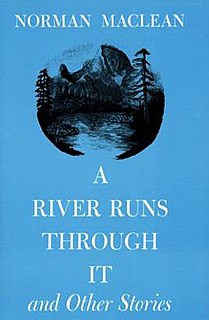
A River Runs Through It and Other Stories is a semi-autobiographical collection of three stories by American author Norman Maclean (1902–1990) published in 1976. It was the first work of fiction published by the University of Chicago Press.
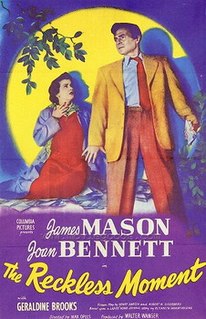
The Reckless Moment is a 1949 American film noir melodrama directed by Max Ophüls, produced by Walter Wanger, and released by Columbia Pictures with Burnett Guffey as cinematographer. It starred James Mason and Joan Bennett. The film is based on The Blank Wall (1947), a novel written by Elisabeth Sanxay Holding. The Deep End (2001) is based on the same source material.

Lee Garmes, A.S.C. was an American cinematographer. During his career, he worked with directors Howard Hawks, Max Ophüls, Josef von Sternberg, Alfred Hitchcock, King Vidor, Nicholas Ray and Henry Hathaway, whom he had met as a young man when the two first came to Hollywood in the silent era. He also co-directed two films with legendary screenwriter Ben Hecht: Angels Over Broadway and Actor's and Sin.
"Pretty Mouth and Green My Eyes" is a short story by J.D. Salinger, initially published in the July 1951 issue of The New Yorker, and later within the larger collection of Salinger’s short works, Nine Stories. Over the span of a few telephone conversations, the story surrounds three adult characters and the remainder of their evening after leaving a party.
In the United States, commercial radio stations make most of their revenue by selling airtime to be used for running radio advertisements. These advertisements are the result of a business or a service providing a valuable consideration, usually money, in exchange for the station airing their commercial or mentioning them on air. The most common advertisements are "spot commercials", which normally last for no more than one minute, and longer programs, commonly running up to one hour, known as "informercials".
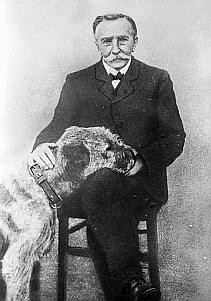
Charles Bourseul was a pioneer in development of the "make and break" telephone about 20 years before Bell made a practical telephone.

May Allison was an American actress whose greatest success was achieved in the early part of the 20th century in silent films, although she also appeared on stage.
"The Lion Has 'Phones" is the third episode of the third series of the British comedy series Dad's Army. It was originally transmitted on 25 September 1969.
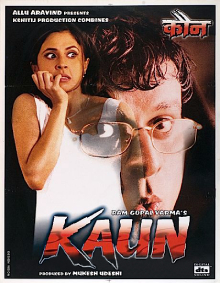
Kaun? (transl. 'Who?') is a 1999 Indian psychological suspense thriller film directed by Ram Gopal Varma, written by Anurag Kashyap and starring Urmila Matondkar, Manoj Bajpayee and Sushant Singh. It was shot in 15 days. It was made in Hindi and Telugu with the latter as Evaru?

The Hours and Times is a 1991 drama film written and directed by Christopher Münch. Starring David Angus and Ian Hart, it is a fictionalized account of what might have happened during a real holiday taken by John Lennon and The Beatles' manager Brian Epstein in 1963.

Kate Bruce was an American actress of the silent era. She appeared in more than 280 films between 1908 and 1931. She was born in Columbus, Indiana, and died in New York, New York. In 1885, Bruce left Boone, Iowa, in a wagon with a group of traveling actors at a time when stages were illuminated by oil lights. On Broadway, Bruce performed in The Starbucks (1903).

Margot Hielscher was a German singer and film actress. She appeared in over fifty films between and 1939 and 1994.

The Story of Alexander Graham Bell is a somewhat fictionalized 1939 biographical film of the famous inventor. It was filmed in black-and-white and released by Twentieth Century-Fox. The film stars Don Ameche as Bell and Loretta Young as Mabel, his wife, who contracted scarlet fever at an early age and became deaf.
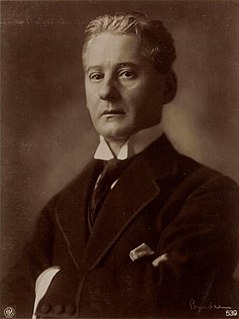
Paul Biensfeldt was a German-Jewish stage and film actor.

Frida Richard was an Austrian actress.

The telephone call between Hassan Rouhani and Barack Obama was a 15-minute telephone conversation that took place on September 27, 2013, during Hassan Rouhani's first visit to New York, at John F. Kennedy International Airport in New York City. This historic call received positive and negative reactions as it was the first telephone call since the two countries severed ties in 1979.
References
- ↑ "How the Telephone Talks". Library of Congress. Retrieved 22 November 2014.